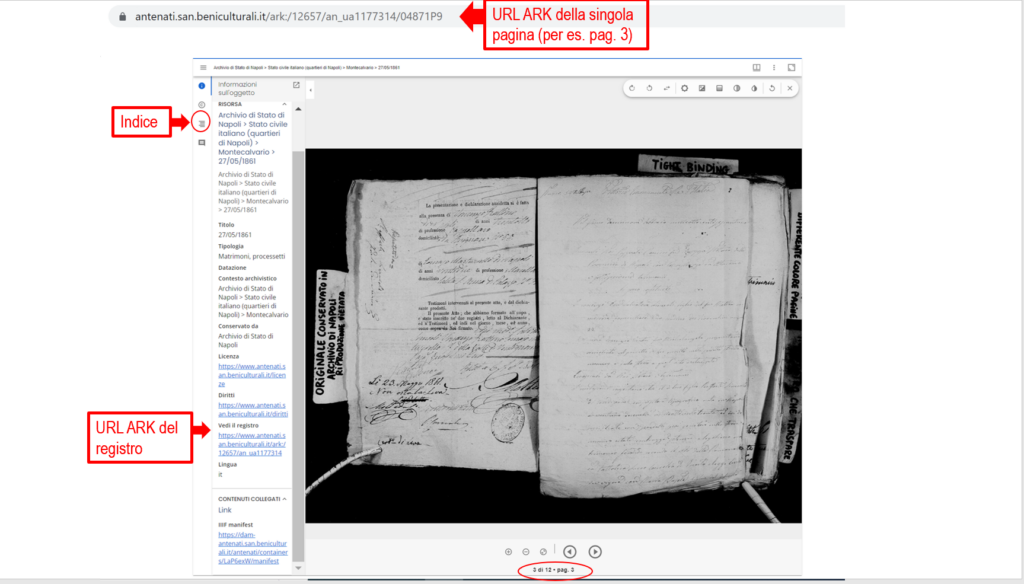Since mid-May, new URLs in ARK format have been made visible on the Portal and the redirect mechanism to previous urls has been activated.
No official communication has been given until now, because the deployment on the Portal was not the final step; on the contrary, it was the starting point for countless verifications and interventions that have followed until now, with the aim of making the two functionalities more and more effective and solid.
All optimizations and tests have been carried out, without creating significant disruptions and inconvenience in consultation.
The Portal has continued, during this time interval, to offer its services and has increased the records and digital objects available.
The two features, the subject of today’s release, are:
- The adoption of ARK (Archival Resource Key) syntax to ensure persistence to URLs of records and acts in the Portal. For registers, the ARK address provides a syntax that also allows for referencing and pointing to the individual pages that make up each volume (Fig.1 and Fig.2).


- The implementation of a redirection (redirect) of the old Portal URLs-saved and used for heterogeneous purposes: for personal and/or historical, genealogical research, in indexations and as a source in biographical and/or family tree reconstructions also in sites such as Wikipedia, Wikitree, MyHeritage, FamilySearch.org, etc. – To the new persistent URLs.
Two clarifications on the redirect:
- There are cases (a minority percentage) where previous URLs are not correctly redirected because adjustments have been made to fund and/or series designations that have made them entirely different (changes due, for example, to normalization or archival revision requirements). In the future, there may again be a need to change these archival designations to make specific corrections.
We reiterate, however, that the margin of nonrecovery is physiological and residual.
Tests on hundreds of links have been carried out in recent months and concluded successfully.
Among the multiple testers involved are Portal users, genealogy experts, who have personally verified the smooth retrieval of URLs saved on their own PCs and in the mentioned sites (Wikipedia, MyHeritage etc.), sending in feedback that has enabled further improvement of the functionality.
We thank Drs. Paola Bonizzato and Daniela Fazzi for their availability and commitment.
- To meet the requests that have come to us from users, it has been decided that the possibility of retrieving old links and then using the redirect will have no time limit.
On this occasion, it is reminded and recommended to:
- consult and read the information on the different pages of the Portal (Instructions for Use, Requests for Certificates, Join the Project) in the Contact form and FAQs, in order to be able to find answers to some frequently asked questions and useful clarifications (e.g. What can I do if in Searching the Records I verify that a page of a record or an entire record is missing? How can I obtain a certified copy of the documentation published on the Portal? etc.);
- use the Form available on the Tell Your Story page only to share their family stories and see them posted in Read Family Stories;
- use the Contact Form only to report anomalies, omissions and/or typos found in the indexation of registers, deeds, personal data and/or locations and not for any other type of requests and enquiries.
Thank you for your cooperation.

